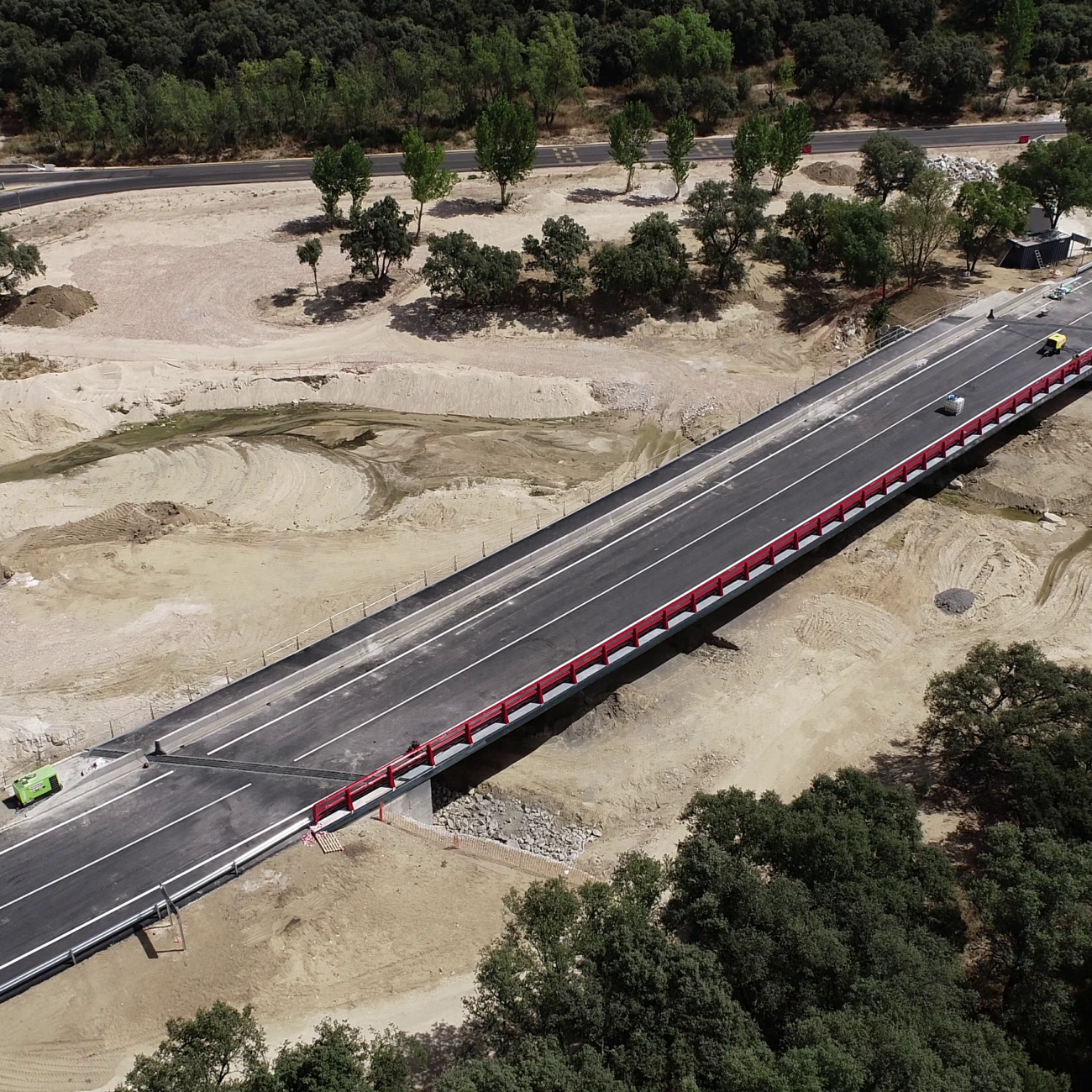In early September 2023, the torrential rains caused by the DANA storm led to the overflow of the Arroyo Grande, a tributary of the Alberche River, which destroyed the existing bridge on the M-507 road. The structure, consisting of two spans of prefabricated beams with a total length of 40 meters, collapsed, leaving Aldea del Fresno partially cut off. The objective of the project is to urgently restore road traffic on the M-507, demolish the collapsed bridge, and build a new, more resilient bridge adapted to the current infrastructure needs.
The new bridge characteristics are:
Given the importance of the M-507 road for local traffic, including a high percentage of heavy vehicles, the urgent restoration of traffic was achieved two months after the disaster. Two provisional crossings were set up: a 50-meter detachable Mabey-type bridge installed by the Spanish Army and a temporary culvert structure. The two crossings allowed for traffic flow without the need for traffic lights, ensuring safe and smooth transit.
The project includes the drafting of the design, construction management, and technical assistance with control and oversight.
The flood not only swept away the deck and pier of the previous bridge, but also caused both abutments to collapse and the embankment to erode, expanding the riverbed from 40 meters to 80 meters. This increase, along with the 45º skew and the transition of superelevation in a curved section of the road, presented technical challenges for the design of the new bridge.
Moreover, it was not possible to raise the roadway, which is close to the river level, as doing so would have affected the provisional detours. To accommodate these constraints, the new bridge features two steel box girders, easier to manufacture and install than a single piece. The variable depth of the girders provides significant stiffness at the central support, attracting bending moments and allowing a reduced depth in the constant-depth sections, thereby increasing the hydraulic section. The piers in the riverbed are founded on piles, eliminating the need for pile caps, which would have been problematic in water.
The use of weathering steel ensures reduced maintenance and high durability, key factors in improving the structure’s resilience to future adverse weather conditions. Durability and ease of maintenance are guiding principles throughout the design.
Upon completion of the works, the natural conditions of the watercourse will be restored, and the surrounding environment will be rehabilitated after the removal of the provisional detour.
